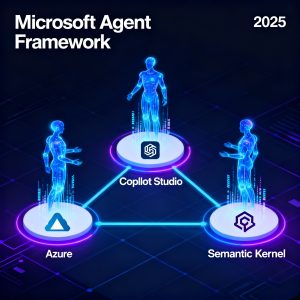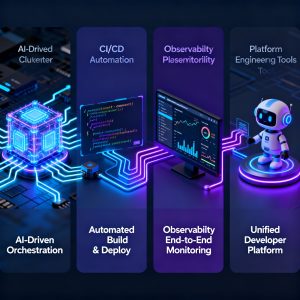In 2025, many developers believe AI assistants like GitHub Copilot can handle most of their work — from writing configurations to generating complete user interfaces. One frontend developer decided to put that belief to the test, dedicating 48 hours and roughly 100 Copilot requests to see whether AI could manage a complex microfrontend setup in React.
The result? Valuable lessons about what AI can and cannot do in real-world development environments.
Day 1 – Expectations Meet Reality
The experiment began with optimism. The developer’s plan was simple: create a React-based microfrontend architecture featuring a host application and multiple remotes for modules like Home, About, Projects, and Contact via Webpack Module Federation.
The initial prompt sounded straightforward:
“Generate a microfrontend setup with host + remotes using React and Module Federation.”
What followed was frustration. Copilot repeatedly produced compile errors, inconsistent imports, and conflicting configurations between Webpack 4 and Webpack 5. Even after 50 different variations using models like GPT‑4, GPT‑5, and Sonnet 4.0, none of the generated setups worked out of the box.
Every configuration attempt resulted in broken dependency sharing and React alias issues. After a day of debugging failed suggestions, the developer had only one outcome — no running application and dozens of wasted prompts.
Day 2 – The Human Fix
By the second day, it became clear that AI couldn’t automate the entire process. The developer switched gears and wrote the Webpack configurations manually, from scratch. Within a few hours, everything compiled perfectly, and each remote connected as intended.
The lesson was unmistakable: configuration files are not mindless boilerplate. They require practical troubleshooting, version alignment, and a clear understanding of how technologies like React, Webpack, and Module Federation interact.
No AI could replicate that hard-earned experience.
Day 3 – Where AI Excels
Once the architecture was working, attention shifted to user interface design — an area where Copilot performed impressively.
Prompts such as “Create a responsive portfolio header using MUI and Framer Motion” produced a clean, functional layout complete with dynamic tabs, a mobile-friendly drawer, and fluid page transitions.
In about a dozen prompts, AI generated a fully responsive UI that matched production quality standards. The only human intervention required was minor styling refinement and component naming.
This phase showed AI’s real strength: speeding up design tasks and front-end polish.
Key Takeaways from the 48‑Hour Test
After two days of back-and-forth with GitHub Copilot and several other models, the findings became clear.
1. AI is great for UI and design tasks.
AI tools can quickly generate well-structured layouts, animations, and responsive designs using modern frameworks and libraries.
2. AI fails at deep configuration work.
Tasks such as Module Federation setup, dependency management, or state architecture require a higher level of contextual awareness that current AI models lack.
3. AI can help migrate projects.
For repetitive processes like switching from React to Next.js, or converting routing logic, AI can handle scaffolding efficiently.
4. Experience remains irreplaceable.
Debugging complex integration issues or resolving dependency loops demands developer intuition — something no AI currently replicates.
A Message to Frontend Developers
There’s a popular assumption that “AI will replace frontend developers.” But as this hands-on experiment demonstrates, the opposite is true.
AI can speed up workflows, automate repetitive tasks, and assist with styling, but it can’t replace the architectural thinking, problem-solving, or contextual understanding that experienced developers bring.
In short, tools like Copilot behave more like junior assistants—capable and efficient for UI work but requiring guidance for anything involving configuration logic or debugging.
Final Reflection
After 48 hours of testing, debugging, and rewriting, the developer did achieve a fully functioning React microfrontend application. But the more meaningful reward was insight.
While AI is revolutionizing development workflows, it doesn’t replace the need for human expertise—it enhances it. The future of coding lies not in surrendering tasks to machines, but in strategically collaborating with AI to accelerate and elevate craftsmanship.
AI won’t replace developers. It’ll simply make great developers even more efficient—and expose the gaps in shallow experience.
Read more such articles from our Newsletter here.



